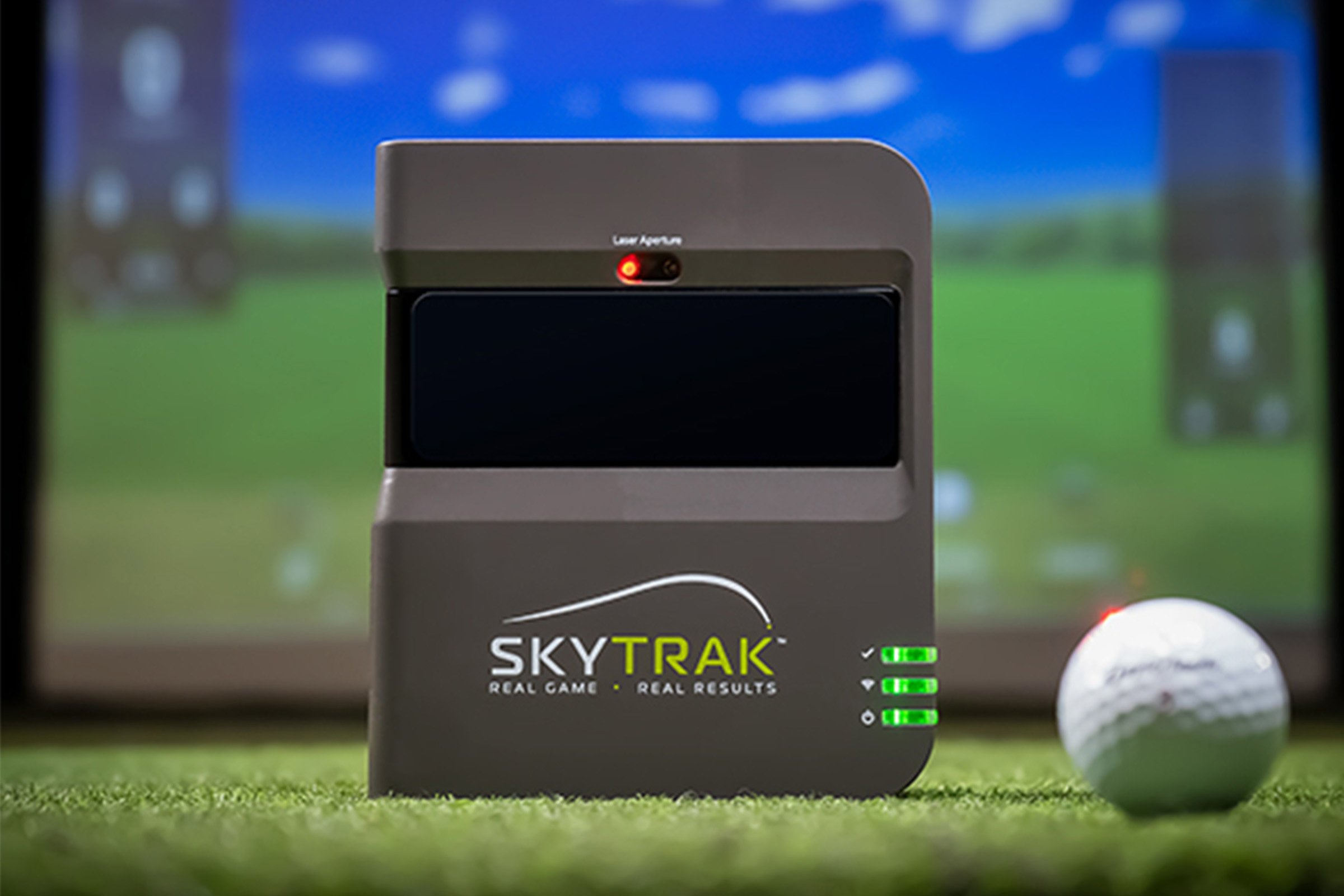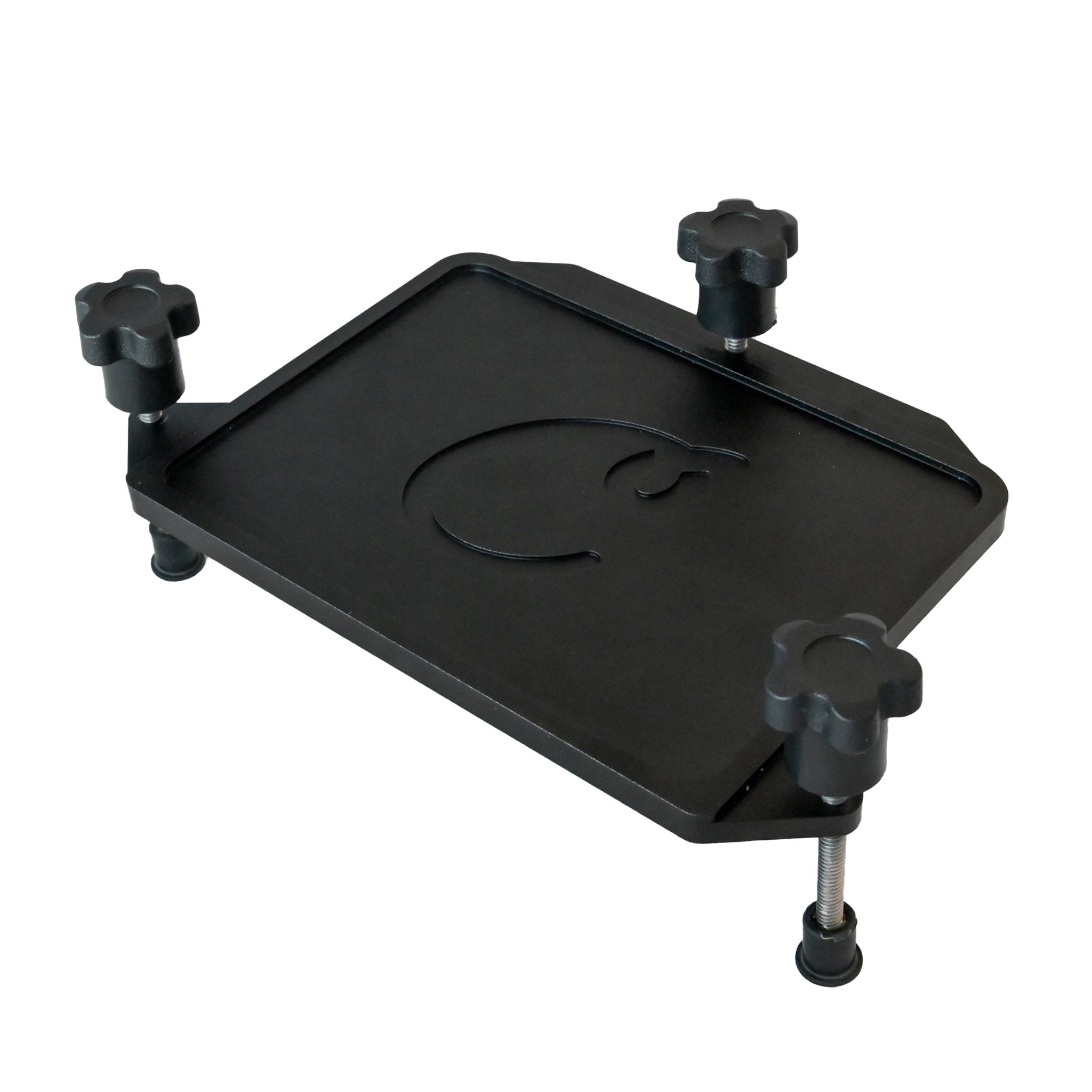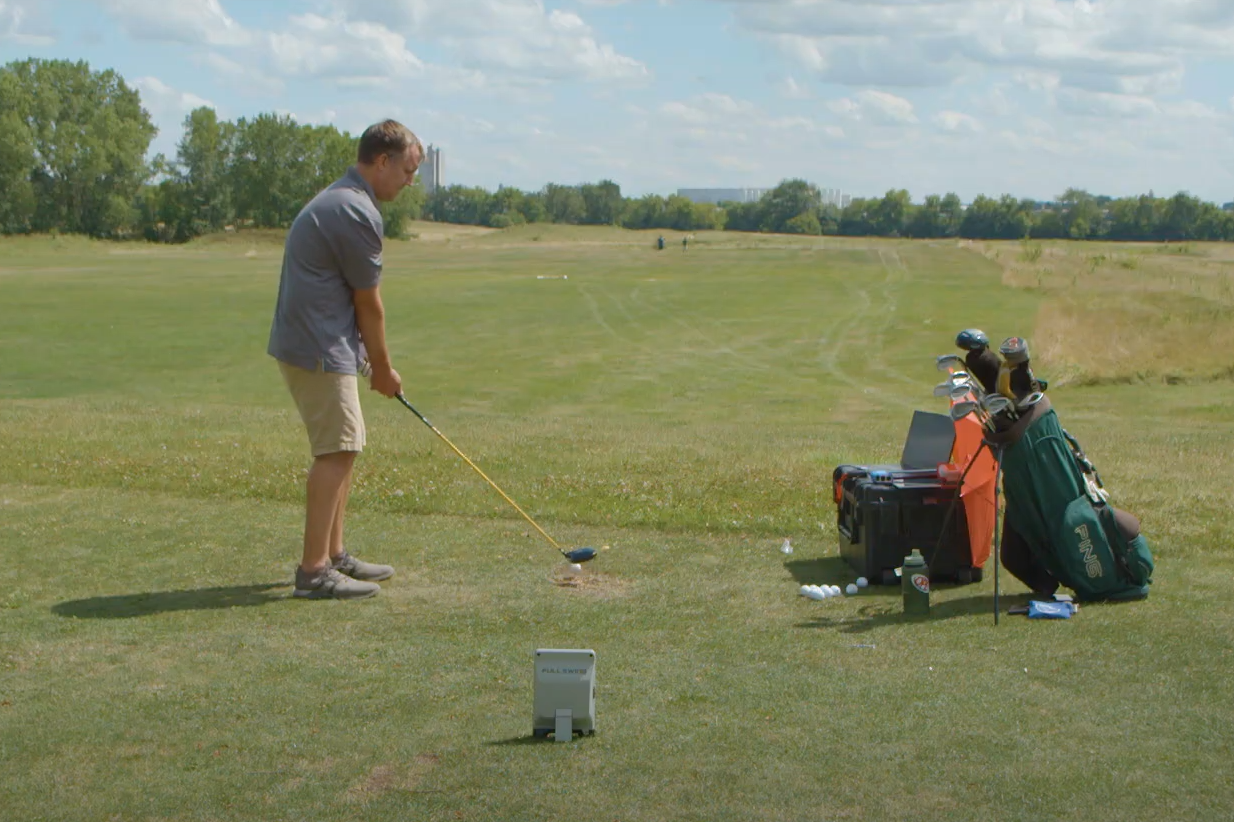When you dole out a couple Gs on a launch monitor, you want to make sure you’re getting the most out of the device. Each launch monitor has different setup criteria to get the most accurate data.
EDITOR'S NOTE: The original SkyTrak launch monitor featured in this piece has been discontinued.

|
FIRST THINGS FIRST, WHY LISTEN TO US?
- We have SkyTrak and other launch monitors set up in our building for daily testing (some call it playing - we're all about combining work and fun).
- We have some of the best customer service ratings in the industry, we regularly talk customers like you through improving your data accuracy with SkyTrak and other launch monitors.
- When the Carl’s Place team tests launch monitors like the SkyTrak at the driving range, we share the raw data. You can see the field test results for yourself.
- We are authorized resellers who work directly with the launch monitor manufacturers.
|
9 TIPS TO IMPROVE SKYTRAK ACCURACY
1) USE A HITTING MAT WITH THE SKYTRAK
With a hitting mat, you can accomplish several troubleshooting steps.
First, if the SkyTrak unit is placed on the hitting mat, it guarantees that the launch monitor is on the same surface as where you are hitting the balls from. Typically, this should help the SkyTrak itself be pretty level, and also the relationship between the ball and the SkyTrak should be pretty level.
Make sure it is a sturdy hitting mat, such as the TrueStrike mat that we used, that will not move around or vibrate when moving around or hitting on it.
However, if you are outside on a natural grass driving range like we were, you will still want to double check that both the SkyTrak and overall hitting area are level. That can be a bit tougher due to the natural bumps in grass.
Hitting from a mat also makes sure there are no blades of grass, dirt, leaves and so on interfering with the photometric reading from the SkyTrak.
2) CHECK YOUR LASER PLACEMENT
On our first trip to the range, we brought just the SkyTrak, golf balls and golf clubs. We figured if we made sure the SkyTrak was level, we would be able to get great data.
It was a sunny day and we planned on hitting off of real grass right next to where we placed the launch monitor.
Some shots read great, some read significantly different than the real-life yardage (as collected via range finder), and some wouldn’t register at all.
We tried moving the ball around so that the laser from the SkyTrak would be on different parts of the ball. We could not find a specific spot that seemed to work the best.
Of course, we were hoping every shot would register and read somewhat accurately every time, so we did some more research and reached out to the team at SkyTrak.
SkyTrak said we should be placing the ball on top of where the laser dot hits the ground, as opposed to placing the laser dot on the side or top of the ball. This will help you get consistent readings instead of frustration from shots not registering. The dot is where the SkyTrak starts taking photos, or measuring data. The data gathering window is a small area between the red dot and your target.
A similar idea goes for hitting a driver off a tee: act like you’re sticking the tee into the red laser dot.
SkyTrak also mentioned that the laser dot needs to be 11-12 inches away from the base of the unit. If you are using the SkyTrak protective metal case, this could affect how far away the laser dot is from the base of the unit, so be sure to measure that whenever it is adjusted.
And if the unit is in the case, make sure to actually screw the unit into the case and don’t just set it in there. Shortcuts for setting up launch monitors tend to have a negative effect on readings and data.
3) SET THE SKYTRAK IN A SHADED AREA
We tested our SkyTrak in all sorts of weather. Sometimes the sun was shining directly on the SkyTrak camera area, and other times it was hitting the back of the unit. Sometimes there was just a light cloud cover and other times it was fully overcast.
SkyTrak recommends using a completely shaded area (such as golfing indoors with a Carl’s Place Enclosure). But, if you are wanting to use the golf simulator outdoors, find the shade of trees or a building to place your hitting area in. Some driving ranges have the dividers/protectors between bays that might provide some much needed shade.
OTHER FACTORS TO KEEP IN MIND
Here are a few other small tips to make sure your SkyTrak is going to register shots:
4) Make sure you have a good, uninterfered wireless connection with your device and SkyTrak.
5) Make sure your hitting area, but not your SkyTrak, are in good light. An easy way to have direct light brighten up the hitting area but not hit the launch monitor is with a spotlight. Since the SkyTrak uses camera technology, most people know that photos are easier to take when your subject is well lit.
6) Make sure the SkyTrak is nice and clean. Dirt on the camera area could affect readings.
7) Place your ball so that the logo is facing the SkyTrak cameras. This will help the cameras get photos of that logo and how it spins on the ball, helping the overall data. Contrast is typically a good thing for cameras.
8) We’ve seen that using a non-white tee can also help, as the SkyTrak might accidentally register data from the tee flying in the air.
9) Don’t get too anxious for your next shot. Make sure your SkyTrak is ready to read your next shot.
Bonus tip: Upgrade to the newer SkyTrak+!
Check out our field test to see how accurate the SkyTrak is outdoors.
The SkyTrak customer service team was a great resource to get several ideas to improve the accuracy of the SkyTrak golf simulator. The SkyTrak user manual, naturally, is another great resource.
These ways to improve the accuracy of the SkyTrak golf simulator should help you use this small, portable unit outdoors. However, like us, you may find better results with the SkyTrak launch monitor indoors in a controlled golf simulator.
Any other questions? Let us know in the comments!


